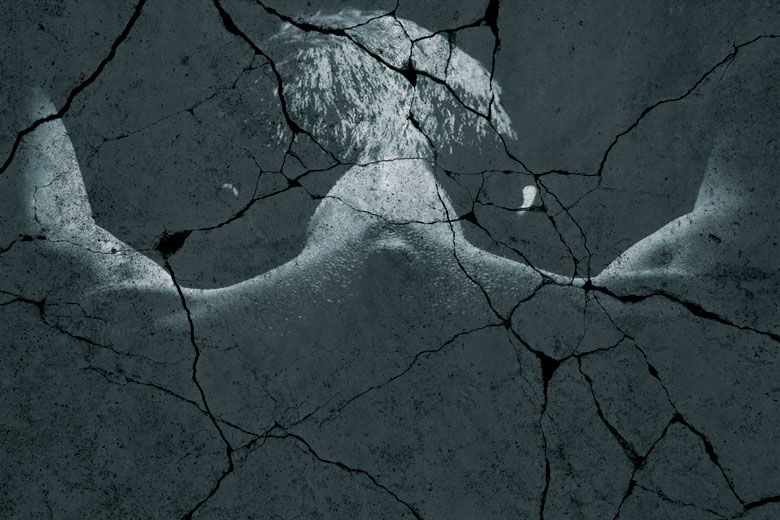Bodies of evidence: psychologists and the CIA torture scandal

The foundations of what was to become known as “enhanced interrogation” were laid when Kirk Hubbard, the CIA’s director of behavioural research and an APA member, commissioned James Mitchell and Bruce Jessen, two ex-US air force psychologists, to deliver a report on possible “countermeasures to al-Qaeda resistance to interrogation techniques”. Neither Mitchell nor Jessen had any useful expertise in counterterrorism, or any knowledge of al-Qaeda. They did, however, have a background in Survival, Evasion, Resistance and Escape (SERE), and the lessons that they had learned while training military personnel to resist enemy interrogators could, they told Hubbard, be reverse-engineered.
Mitchell and Jessen’s report, which is reproduced in the US Senate Select Committee on Intelligence’s 2012 report on the CIA’s “detention and interrogation programme”, delivered exactly what the agency needed: it falsely claimed that the “Manchester Manual”, an al-Qaeda handbook recently discovered by police in Manchester, gave operatives precise instructions on how to lie effectively to captors and make false allegations of torture. And it sketched a system of coercive interrogation that was purportedly based on research on fear conditioning that the psychologist Martin Seligman had undertaken in the late 1960s, prior to founding the Positive Psychology Center at the University of Pennsylvania and becoming one of America’s leading self-help gurus.
As a postdoctoral researcher at Pennsylvania, Seligman and his colleague Steven Maier had studied the behaviour of dogs that were exposed to electric shocks. They noticed that dogs that had been previously given uncontrollable shocks were unable to learn simple escape strategies. When a flashing light signalled a forthcoming shock that could be evaded by passing over a low barrier, these dogs lay down and whined abjectly; it was only by physically lifting them, to demonstrate how the shock could be avoided, that Seligman was able to undo what he called their “learned helplessness”.
Seligman – who is a former APA president and is still director of the Positive Psychology Center – went on to propose that his findings could also be usefully extrapolated to the study of human defeatism, and much of his work in the 1980s and 1990s was concerned with using cognitive therapy to change the “explanatory styles” of those at high risk from depression. Jessen and Mitchell’s interest in learned helplessness was rather more left field. In December 2001, Mitchell attended – but apparently did not speak at – a meeting at Seligman’s home of what Seligman describes to me in an email as “12 distinguished professors and four intelligence officers” to discuss “how to win the peace” via the “psychology of capitulation”. According to Seligman, there was “not a single mention of interrogation, torture, or prisoners”. But not long afterwards, the air-force psychologists proposed that learned helplessness could encourage a detainee to cooperate and provide information.
Mitchell and Jessen, who were experienced only in conducting mock torture in SERE training, were called to test out their “new” approach in the summer of 2002. The first prisoner subjected to “enhanced interrogation” was Abu Zubaydah, a Saudi national believed to have been involved with al-Qaeda recruitment in Afghanistan. Held at a black site in Thailand, Zubaydah had already been subjected by FBI agents to “informed interrogation”, which aimed to slowly build trust and rapport with suspects, and he had already identified Khalid Sheikh Mohammed as the mastermind of the 9/11 attacks.
Dismissing this “throwaway information”, Mitchell and Jessen began by ordering that Zubaydah be stripped and treated like a “dog in a cage”, according to the Senate committee report, which was partly declassified in December 2014. Over the next 20 days, he was sleep deprived, slammed against his prison door, imprisoned in a box and waterboarded 83 times. During this time, staff physicians from the CIA’s office, by now in the habit of dressing in the same black uniform as the interrogators, were in effect spectators to the wounded detainee’s decline. “Longest time with [wet] cloth over his face so far has been 17 seconds. This is to increase shortly. No useful information so far,” wrote one of Zubaydah’s attending medical officers in case notes published in the Senate committee report. Later, when Zubaydah was said to have “partially” refused liquids, the CIA Office of Medical Services’ own physicians became fully assimilated into the interrogation process, administering a series of rectal enemas whose sole purpose was to violate and degrade. In other words, Zubaydah was not only tortured, he was medically raped.
Prior to the torture of Zubaydah, who is still held at Guantanamo Bay, the CIA’s legal department had requested clarification from the Department of Justice regarding the methods that Mitchell and Jessen would be able to use to acquire information from him. The “torture memos” gave specific approval for a dozen or so techniques that Mitchell and Jessen had so far outlined, from waterboarding to solitary confinement, before claiming that “cruel, inhuman and degrading treatment” did not constitute torture as long as there was no “specific intent to cause severe pain”. The only mooted techniques at which the department drew the line were mock execution and burial.
Buoyed by this outlandish reinterpretation of torture, Mitchell and Jessen announced that the interrogation of Zubaydah, which had left him mentally broken and blinded in one eye, had in fact been an unqualified success: “Our goal”, they wrote, in his case notes, “was to reach the stage where we have broken any will or ability of [the] subject to resist or deny providing us information (intelligence) to which he had access. We additionally sought to bring [the] subject to the point that we confidently assess that he does not…possess undisclosed threat information, or intelligence that could prevent a terrorist event.”
In late 2002, enhanced interrogation claimed its first fatality. Gul Rahman, an Afghan citizen, died of hypothermia after being left naked from the waist down on the stone floor of his cell. Three months earlier, the APA – of which Mitchell was a member until 2006 – had amended its ethics code, such that psychologists could legitimately kowtow to “the requirements of the law, regulations, or other governing authority”. The revision, which had been ushered in by Stephen Behnke, the association’s long-standing ethics chief, ensured that any psychologist assisting in the torture and abuse of detainees would be able to invoke the same legal defence that Nazi physicians had made at Nuremberg: they were only following orders.
Mitchell and Jessen were fast on their way to becoming America’s first millionaire torturers. In 2005, they founded a company, Mitchell Jessen and Associates, and agreed to provide the agency with staff for its expanding programme. Also on the board of the company was Joseph Matarazzo, a former president of the APA and emeritus professor of behavioural neuroscience at Oregon Health and Science University. A specialist in non-verbal communication, Matarazzo had, before taking up his position, argued to an advisory committee of the CIA – which no doubt fed the advice to the Department of Justice – that sleep deprivation did not constitute torture.
That the APA had travestied its council review process to ensure that psychologists would be able to participate in enhanced interrogation became slowly apparent after Jean Arrigo, an independent social psychologist, was appointed to sit on the association’s Task Force on Psychological Ethics and National Security. Formed after the Red Cross had issued the first reports of torture at Guantanamo Bay in 2004, the task force would go on to issue guidelines for psychologists assisting with military interrogations. But Arrigo, the daughter of an intelligence analyst, quickly sensed that she was a token independent presence on a panel that was trying to ensure that psychologists provided the security services with policy cover for abusive interrogation. Her calls for clarification on techniques that psychologists could not participate in were duly stonewalled.
But the true extent of APA collusion with the CIA and Department of Defense was about to unravel. As other psychologists reported their concerns about ethical violations and harm in interrogations at Guantanamo and other black sites, it became obvious that “enhanced interrogation” was doublespeak at its most insidious.
Unfortunately, the US news media were rather reluctant to critically unpack the weasel language: it remained unclear to the public that “waterboarding” meant near-drowning, that “employing a stress position” could mean being left for days on end with one’s arms shackled to a high horizontal bar, or that “solitary confinement” could mean being locked in a box or coffin. And “rectal feeding”, the CIA’s preferred method of sexual degradation, continued to pass itself off as a bona fide medical treatment.
In the summer of 2014, after the APA had spent some years belligerently rebutting most of the charges levelled at its leadership, the association commissioned former assistant US attorney David Hoffman to conduct an Independent Review Relating to APA Ethics Guidelines, National Security Interrogations and Torture. He found that although the “meaningful changes” to the APA’s ethics code in 2002 were “not influenced by an effort to help the government’s interrogation efforts”, the association had indeed secretly collaborated with officials at the Pentagon in 2005 to draft ethics guidance so as not to bar psychologists from taking part in coercive interrogation programmes. Chiming with the Senate committee findings into CIA torture (which finally prompted President Barack Obama’s graceless admission in 2014 that “we tortured some folks”), the Hoffman report demonstrated that the APA membership was serially traduced by officials who sought to stifle grass‑roots dissent. As Arrigo and fellow psychologist Roy Eidelson wrote in the LA Times in July 2015, it had been a victory for the “war entrepreneurs, careerists and yea‑sayers”.
The key players implicated in the APA torture scandal, including Behnke, have now resigned or retired. Opposition to the Nuremberg Ethic has been resolved by a policy banning psychologists from assisting in interrogations by the military or intelligence agencies. Disaffected APA members have returned to the fold and Arrigo’s “courage and persistence in advocating for ethical behaviour among her fellow psychologists” has been recognised by the American Association for the Advancement of Science with the award of its Scientific Freedom and Responsibility Award last year.
Still, the inquest into psychologists’ participation in what the Civil Liberties Union has called “the worst systematic brutality ever inflicted on detainees in modern American history” is by no means over. Questions continue to be asked about who knew what and when. And only history will tell what the APA has learned from its latest misadventure.
Antonio Melechi is a visiting fellow in the Humanities Research Institute at the University of Leeds.
This article has been archived for your research. The original version from Times Higher Education can be found here.


